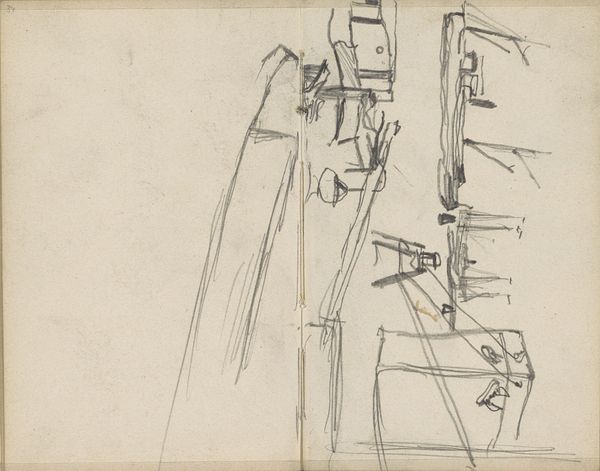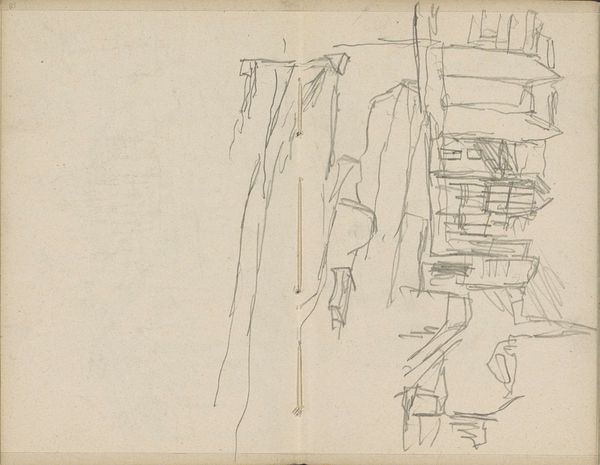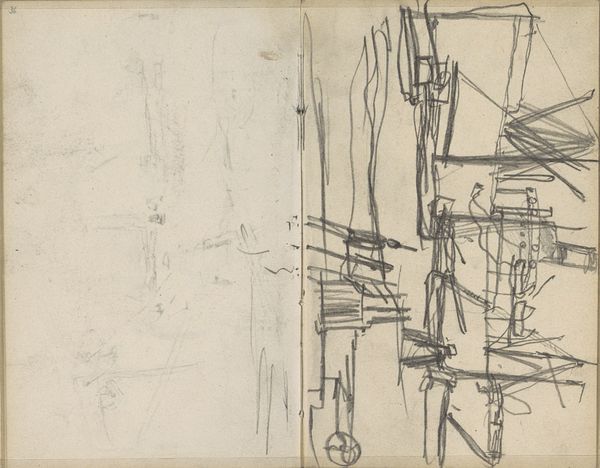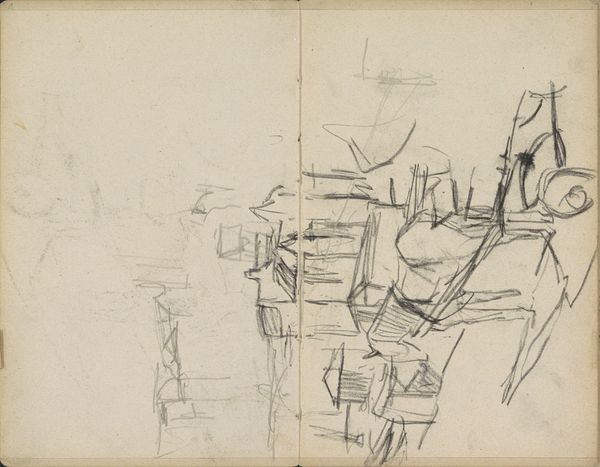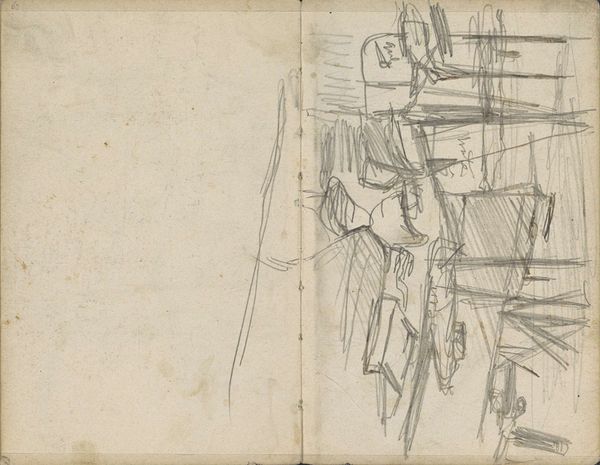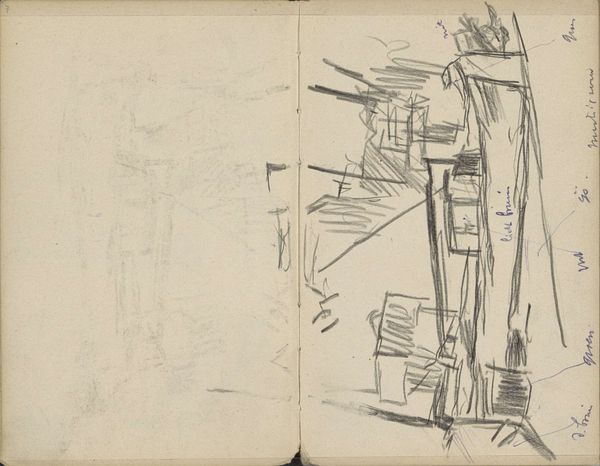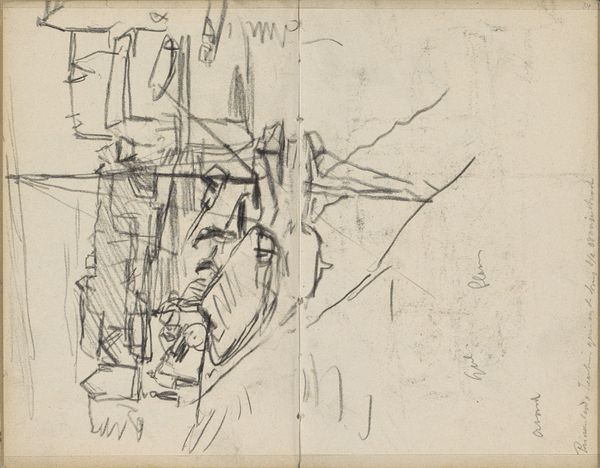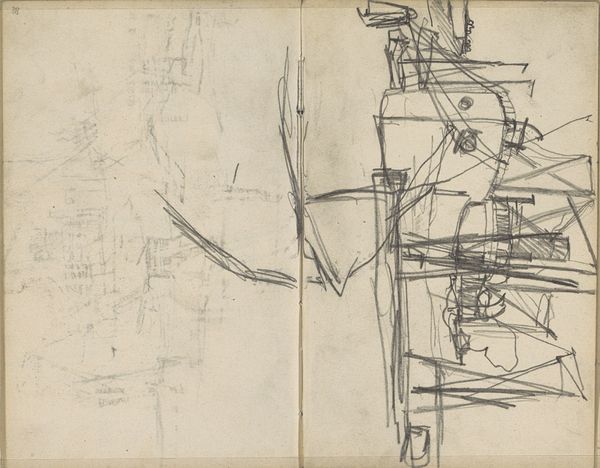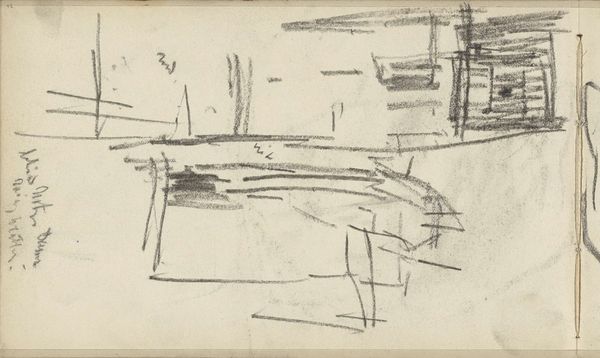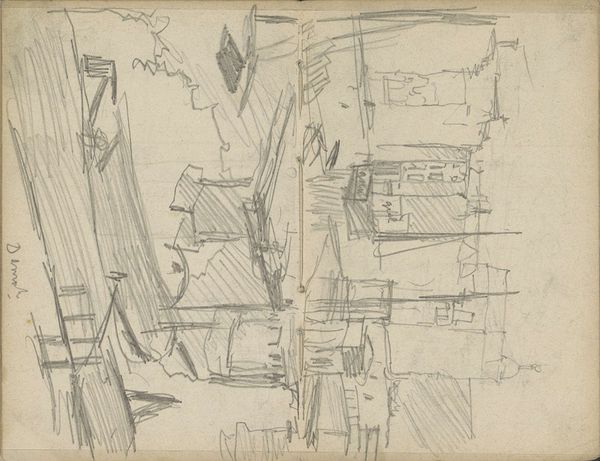
Copyright: Rijks Museum: Open Domain
Curator: Here we have George Hendrik Breitner’s pencil drawing, "Cityscape with a Bascule Bridge," created around 1903. It’s currently held here at the Rijksmuseum. Editor: Well, my immediate reaction is one of fragmented movement. It’s not quite abstract, but it’s very economical, all sharp angles and quickly sketched lines suggesting rather than defining form. It’s clearly a bridge, but just barely. Curator: Indeed. Breitner was fascinated by the bustling urban landscape of Amsterdam. This sketch captures that industrial energy but presented raw, devoid of romanticism. It reveals the working-class areas typically overlooked by art. The placement and commission details would say much about Breitner's positioning within that culture. Editor: You can almost feel the graphite scraping across the page. Look at the raw materiality— the visible strokes, the unfinished quality. This wasn’t about polish. The labor of representing industry and the actual manual labor seem entwined here. What kind of pencils were available then? That must shape the texture of the piece. Curator: That’s fascinating to consider. Breitner moved amongst literary and political circles of the time. As a Realist, Breitner aimed to document the reality of city life. His subjects of interest, prostitutes, laborers, the everyday were rather scandalous, and often considered immoral. The artist held to making works that would bring his truth to light. Editor: It speaks to how materials themselves become political. Choosing a humble pencil over paint, prioritizing rapid sketches over finished compositions...it reflects the value placed on immediacy and direct observation, and perhaps, a kind of rebellious, rough aesthetic? A mark against more academic sensibilities of the day? Curator: Precisely. He was challenging the establishment’s norms, insisting that the overlooked aspects of the city—the bridge and the figures that were easily deemed immoral--held worth. Editor: I'm left thinking about how art history often frames "finish" as superior. Breitner reminds us that sometimes the rough sketch, the immediate gesture, carries a vital truth. It's refreshing. Curator: And it’s a reminder that even a seemingly simple sketch can reveal profound truths about society and its values.
Comments
No comments
Be the first to comment and join the conversation on the ultimate creative platform.
